HA GIANG – On 30th October 2024, in Ha Giang City, the Ha Giang provincial Department of Culture, Sports, and Tourism (DoCST) of Ha Giang Province organized the “Ha Giang Green Tourism Forum 2024” with the theme “Green tourism towards sustainable community development.”
The event was sponsored by the Swiss State Secretariat for Economic Affairs (SECO) and received technical support from Helvetas Vietnam and the Center for Rural Economy Development (CRED).
The forum was attended by over 120 delegates from government agencies, community tourism destinations, tourism experts, businesses, and both domestic and international organizations. The event aimed to raise awareness among stakeholders about sustainable tourism and promote the practice of sustainable tourism in community tourism development activities in Vietnam in general and in Ha Giang province in particular.

Delivering opening remarks, Mr. Nguyen Hong Hai, Director of the provincial DoCST, stated that in recent years, the province has implemented green tourism practices and achieved initial results in developing green products, green accommodations, green food, green transportation, and green purchasing.
“The development of green tourism is truly necessary. It is also a long-term orientation for the Vietnamese tourism in general and Ha Giang’s tourism in particular, especially in the context of many environmental changes. Ha Giang identifies green and sustainable tourism development as an important strategy to enhance the competitiveness of the tourism industry,” Mr. Hai emphasized.
Although initial green tourism activities have been implemented, Mr. Hai acknowledged that Ha Giang’s tourism still faces many challenges and expressed hope that opinions of the participants at the forum would provide solutions to overcome limitations, so that the province can better leverage its tourism resources and organize tourism activities responsibly towards the environment and society.
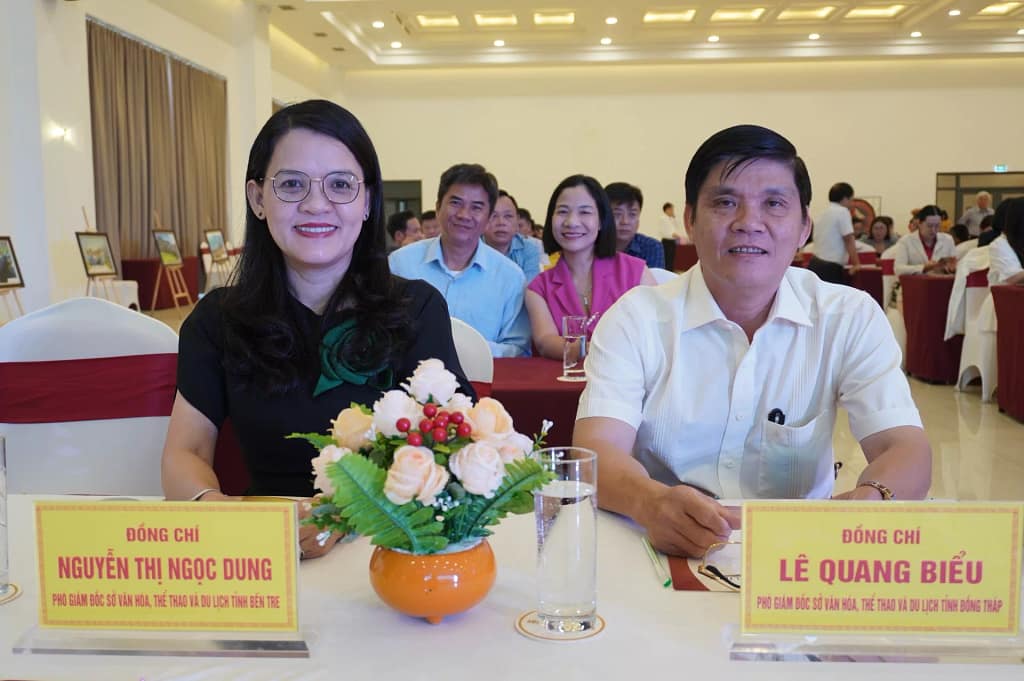
At the event, Mr. Pham Van Luong, Country Director of Helvetas Vietnam, affirmed that Helvetas Vietnam and CRED would continue to accompany and support Ha Giang’s tourism sector in becoming more sustainable through specific activities, such as providing technical support for implementing the province’s sustainable tourism policies, assisting in building and managing green and sustainable community tourism models, and helping to select and implement initiatives for the province’s sustainable tourism development.
“We hope that our partnership through the ST4SD project will make a small contribution to achieving Ha Giang’s sustainable tourism development goals, making Ha Giang one of the prominent green tourism destinations in Vietnam and the region in the near future,” Mr. Luong emphasized.
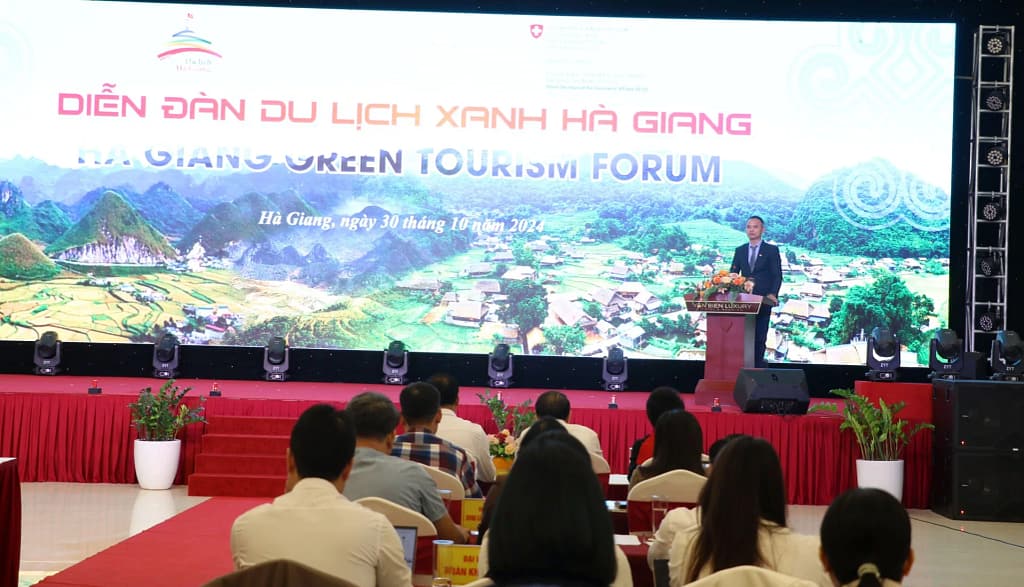
Sustainable tourism in community-based tourism development
In the first session, local speakers emphasized the necessity of developing and applying internationally recognized sustainable criteria, with adjustments to suit the actual situation in Ha Giang. The sustainable tourism criteria will help Ha Giang increase its visibility, positioning, and promotion of its sustainable tourism brand.
Dr. Phi Thi Linh Giang, a lecturer at VinUni University and a consultant for the ST4SD project, shared insights on green tourism in the global context and lessons for managing sustainable community-based tourism in Ha Giang. She introduced the four sets of criteria developed by the Global Sustainable Tourism Council (GSTC), based on four main pillars: sustainable management, socio-economic impact, environmental impact, and cultural impact, to ensure sustainability in tourism.
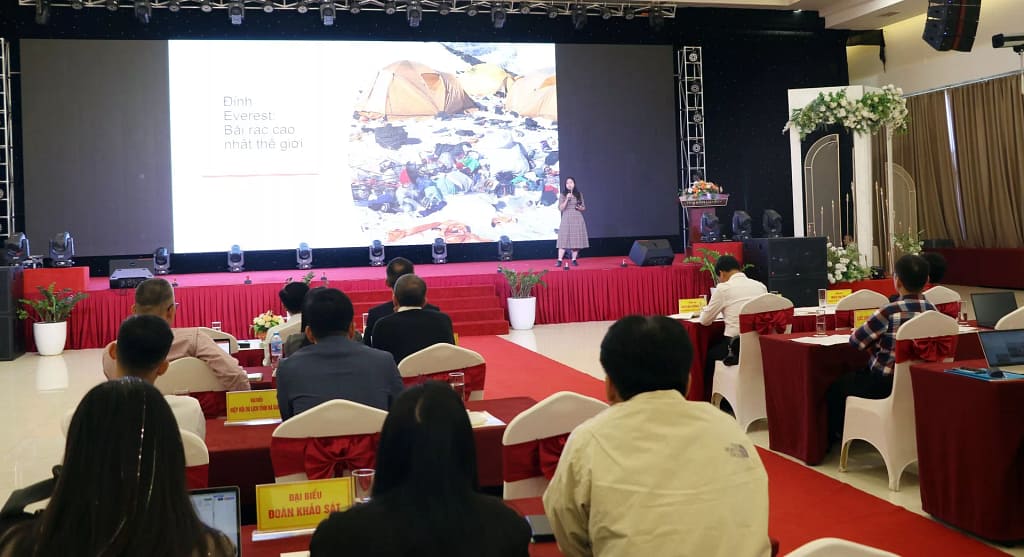
According to Dr. Giang, developing sustainable tourism based on the GSTC criteria helps destinations affirm their sustainable brand, attract tourists, establish a foundation for cooperation among stakeholders, including government, non-governmental organizations, and local communities, to develop sustainable tourism requirements and standards, and inspire others to act for sustainability, raising public awareness of the importance of sustainable tourism.
According to the results of a survey conducted in March 2024, over 90% of respondents wanted Hà Giang to become a sustainable and green destination. “Current community tourism standards are weak in terms of planning, monitoring, and evaluating criteria, indicators, and sustainability goals. To develop sustainable community tourism, Hà Giang should start with the first pillar – sustainable management – with clear policy frameworks, plans, strategies, and specific criteria for monitoring and evaluating the remaining pillars related to socio-economic, environmental, and cultural impacts,” Dr. Giang said.
With its stunning natural landscapes and the unique cultural identities of the Tay, Nung, Dao, and La Chi ethnic groups, Khun Village (Bang Lang Commune, Quang Bình District) is planned to develop community-based tourism in the 2021-2025 period and has initially attracted many tourists to participate and experience. Mr. Tang Trung In, Vice Chairman of the People’s Committee of Quang Bình District, shared that the Khun village currently meets green and clean criteria but further efforts are needed to raise local people’s awareness and improve their environmental protection consciousness.
Ms. Le Thi Chau Trinh, Deputy Head of the Tourism Management of the Quang Nam provincial DoCST, noted similarities between Quang Nam and Ha Giang in terms of advantages and potential for developing green and sustainable tourism. She shared experiences in building Quang Nam provincial set of green tourism criteria funded by the Swiss government, the advantages and challenges faced during implementation, and the efforts of local authorities and businesses to apply these criteria and practice green tourism.
“When we first began implementing the set of green tourism criteria, local businesses were skeptical and hesitant to adopt them because they seemed detailed and unclear in terms of benefits. With technical support from the project and strong backing from the government, we organized training courses and technical guidance. After a year, we began seeing results, with 11 businesses taking the lead in applying the criteria,” Ms. Trinh said.
Tourism businesses in Quang Nam are eager to participate in the province’s green tourism certification and are also aiming for international certifications such as TourCert or Travel Life. With project support, Quang Nam is adjusting the criteria to ensure practicality, ease of implementation, and alignment with international standards. However, the current challenge is the lack of policies to encourage the development of green and sustainable tourism. Businesses and communities have implemented it independently without benefiting from policy incentives. Quang Nam is currently working on a draft incentive mechanism to present to the provincial People’s Council in 2025.
“We cannot do green tourism alone; we need to work together. With cooperation from other provinces, we can spread the values of green and sustainable tourism,” Ms. Trinh emphasized.
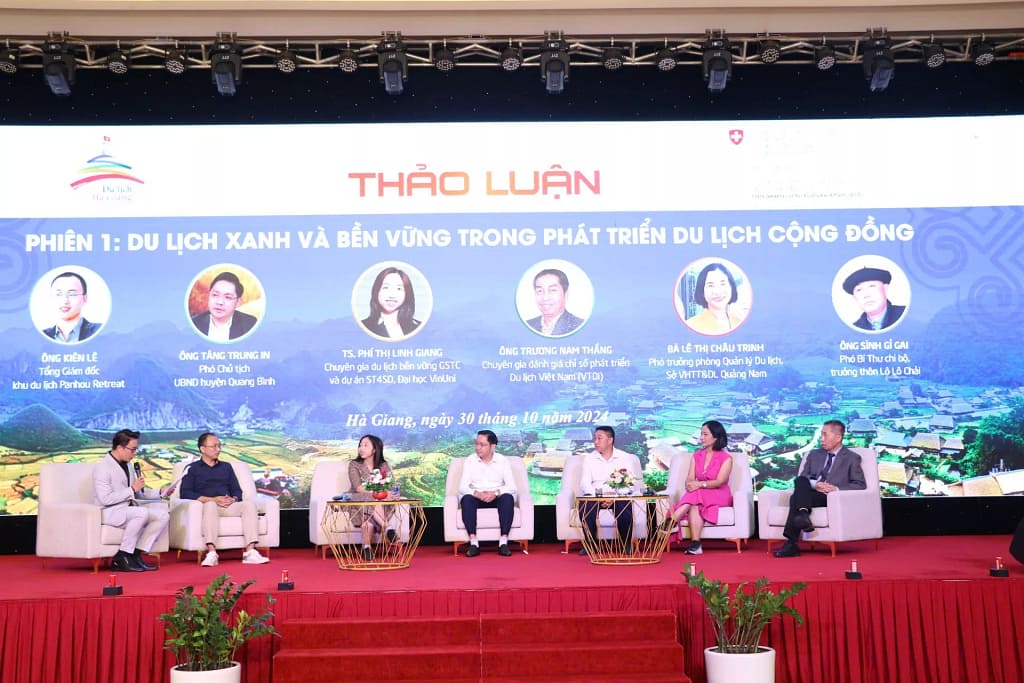
From the perspective of a tourism operator, Mr. Kien Le, CEO of Panhou Retreat, distinguished between the concepts of green tourism, sustainable tourism, and responsible tourism. Green tourism is nature-based, aimed at reducing environmental impacts. Sustainable tourism is the result of both green tourism and community-based tourism. Responsible tourism refers to the actions we take to maintain green tourism and ensure sustainable development. Panhou chooses to develop its products based on three pillars: protecting nature, preserving community culture, and sharing benefits with the community while supporting local development.
“From an investor’s perspective, when we talk about green and sustainable tourism, we should not forget to discuss the market for the products. We need to consider which markets are interested in sustainable tourism,” Mr. Kien said. “Ha Giang is doing a great job in promoting tourism, and it just needs to target the right market that matches its tourism products.”
Solutions and initiatives to promote green tourism
Ha Giang has many strengths in terms of natural landscapes and cultural identity to develop green and sustainable tourism. Developing green tourism models in Ha Giang will positively impact the environment, raise awareness among tourists, and maintain the sustainability of the destination. At the workshop, both domestic and international speakers discussed finding solutions to promote green and sustainable tourism in Ha Giang.
Mr. Lai Quoc Tinh, Chairman of the Ha Giang Tourism Association, shared that those involved in tourism in HaGiang, guided by the provincial leadership, have leveraged the advantages of nature, culture, and local people to build sustainable tourism products that reflect the unique characteristics of Ha Giang. He expressed the desire for local authorities to support policies for businesses and investors and to work together to develop scientifically-based regulations and management frameworks for community-based tourism villages.
“When developing, we need to preserve the traditional architecture of the community tourism village and avoid building too much, as it could disrupt the village’s space. We must also maintain the traditional livelihoods of the local people, such as agriculture and textile weaving, and ensure detailed architectural planning to avoid turning the village into a town,” Mr. Tinh said.
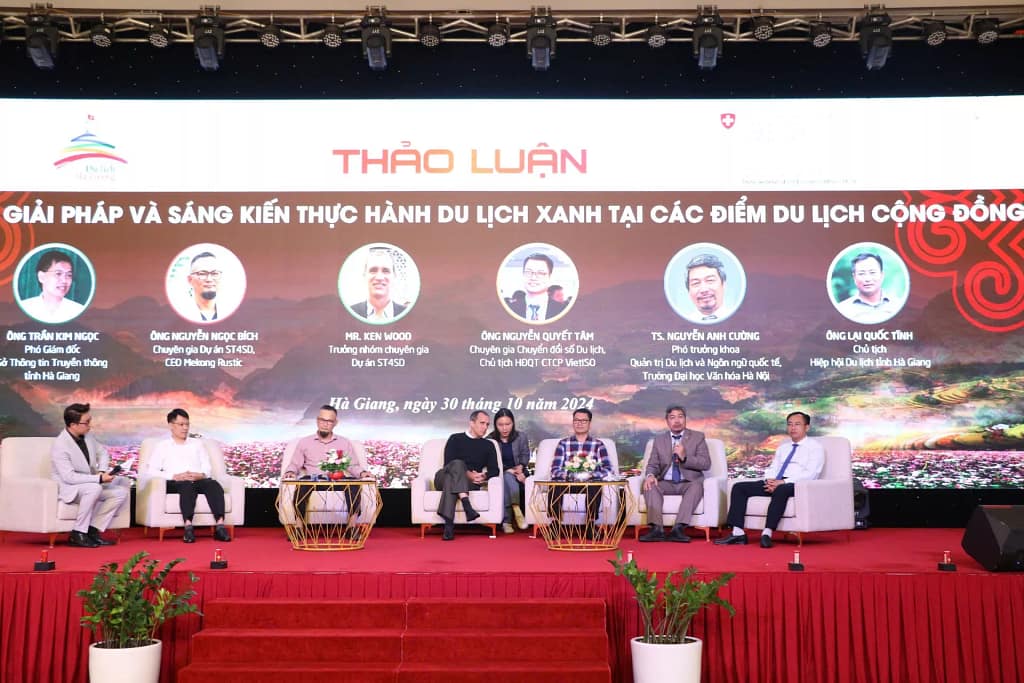
According to Mr. Kenneth Wood, Team Leader of the ST4SD project, developing green and sustainable tourism requires the involvement of stakeholders and a set of criteria to measure the achieved results. He stated that the project will continue to assist Ha Giang in building a community tourism regulation and developing sustainable tourism products in the community-based tourism villages.
Meanwhile, Mr. Nguyen Ngoc Bich, Sustainable Product and Destination Development Component Manager of the ST4D project, proposed initiatives to promote green tourism practices in Khun and Lung Hau villages (Thai An commune, Quan Ba district). He pointed out the need to establish a task force, clearly assign roles to each party, focus on developing a value chain, and strengthen communication efforts. Based on the resources and potential of the two villages, Mr. Bich suggested feasible tourism products such as adventure activities, cycling tours, electric car tours to explore local culture and crafts, and agricultural tourism in combination with community-based tourism.
Sharing results from Ha Giang’s tourism industry according to the 2023 Vietnam Tourism Development Index (VTDI), Mr. Truong Nam Thang, an independent expert, noted that Ha Giang ranked relatively low compared to 30 other destinations. The province has several key areas that need improvement, including: (1) the general workforce and tourism-specific workforce; (2) the level of telecommunication and information technology infrastructure readiness; (3) income and data sharing; and (4) aviation infrastructure.
“Among the 111 indicators, many are very low and are unrelated to Ha Giang’s tourism sector but are mostly the responsibility of other departments. Therefore, to find ways to improve the province as a destination, the best approach is for the provincial People’s Committee to organize a technical meeting, inviting representatives from relevant departments, along with the DoCST, to analyze and define strategic directions. The province can then instruct the relevant departments on what actions to take to improve the destination,” Mr. Thang shared.
While Ha Giang has achieved significant success in tourism promotion, communication efforts to raise awareness about green and sustainable tourism still need to be strengthened. Communication activities should not be limited to state media but should also involve community-based media for broader support.
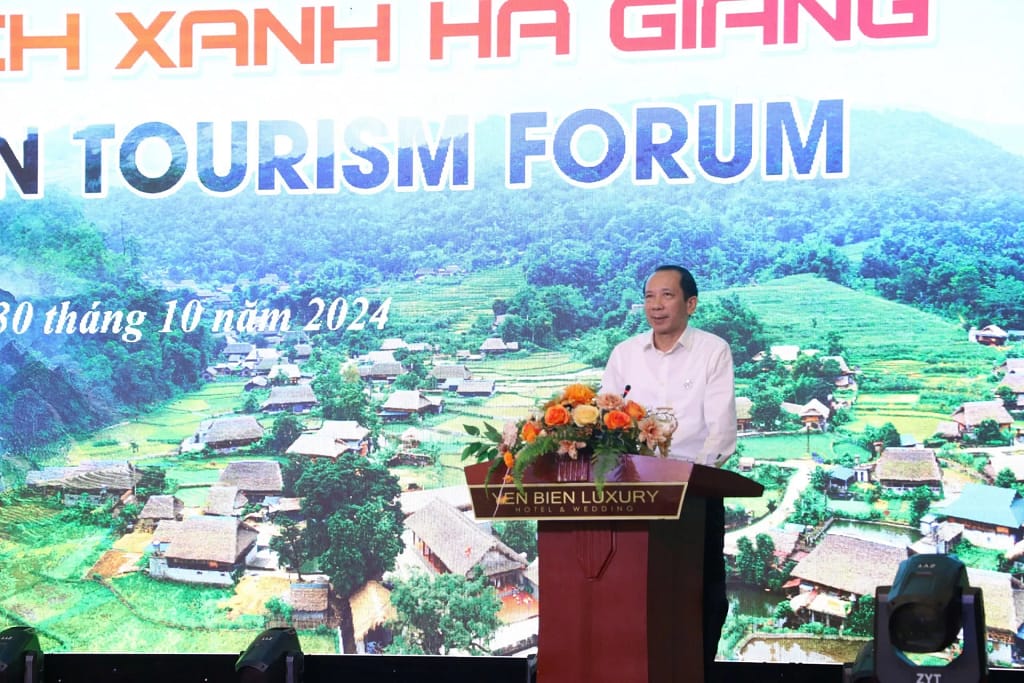
According to Mr. Tran Kim Ngoc, Deputy Director of the Ha Giang Department of Information and Communications, the province needs a set of green tourism criteria for destination identification and evaluation. Media agencies should base their communications on these criteria to raise awareness and value for the community. Additionally, Ha Giang needs to proactively communicate, implement regular communication efforts, and develop a clearer communication strategy with more specific goals.
Agreeing with Mr. Ngoc’s remarks, Mr. Nguyen Quyet Tâm, Tourism Digital Transformation Expert and Chairman of the Board of Members of VietISO JSC, emphasized the need for a set of standardized indicators to ensure coherence. He also suggested that these indicators be digitized so that businesses, the tourism community, and local residents can practice green transformation and access digital technology, and that training courses should be held to raise awareness on these matters.
Speaking at the forum, Vice Chairman of the Ha Giang provincial People’s Committee, Mr. Tran Duc Quy, emphasized that the province will continue to prioritize and direct relevant departments, localities, and organizations to collaborate closely with associations, businesses, and individuals in a synchronized and effective manner to make the province’s tourism products more professional, efficient, and sustainable.
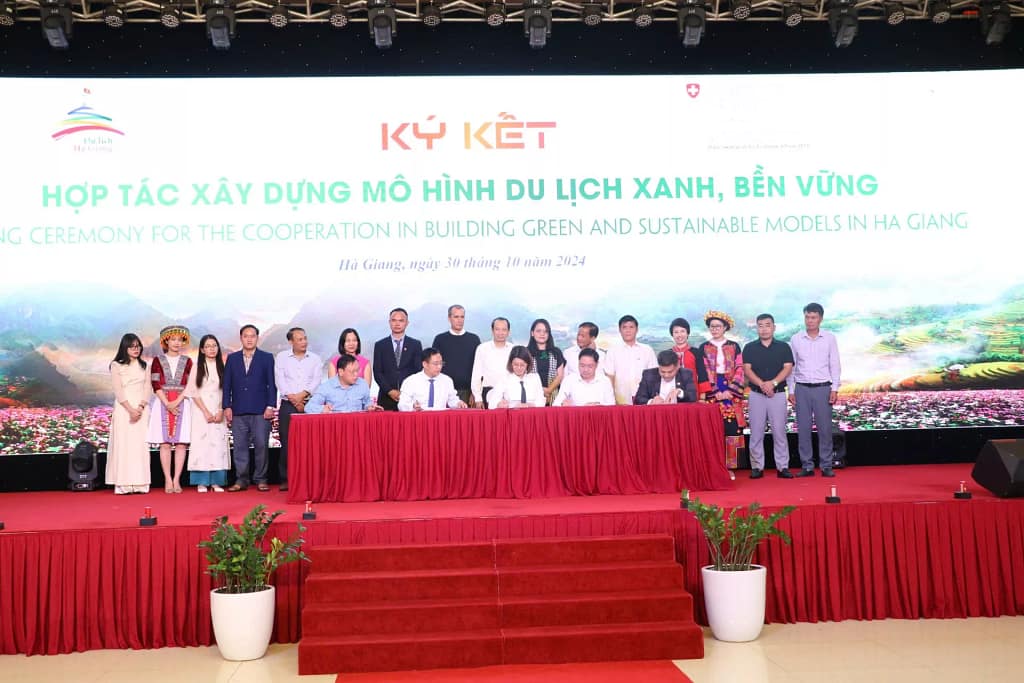
At the forum, the signing ceremony of cooperation agreements was held for the development of green and sustainable tourism models between H’Mong Village Co., Ltd. and Lung Hau village; between Ha Giang Tre Company and Khun village; and between the provincial DoCST, the Ha Giang Tourism Association, Quang Binh District, Quan Ba District, and Ha Giang City.
Previously, on October 28-29, 2024, the delegation went on a field trip to survey the community-based tourism development model in Khun, Lung Hau, Tha, and Ha Thanh villages (in Phuong Do commune, Ha Giang city).